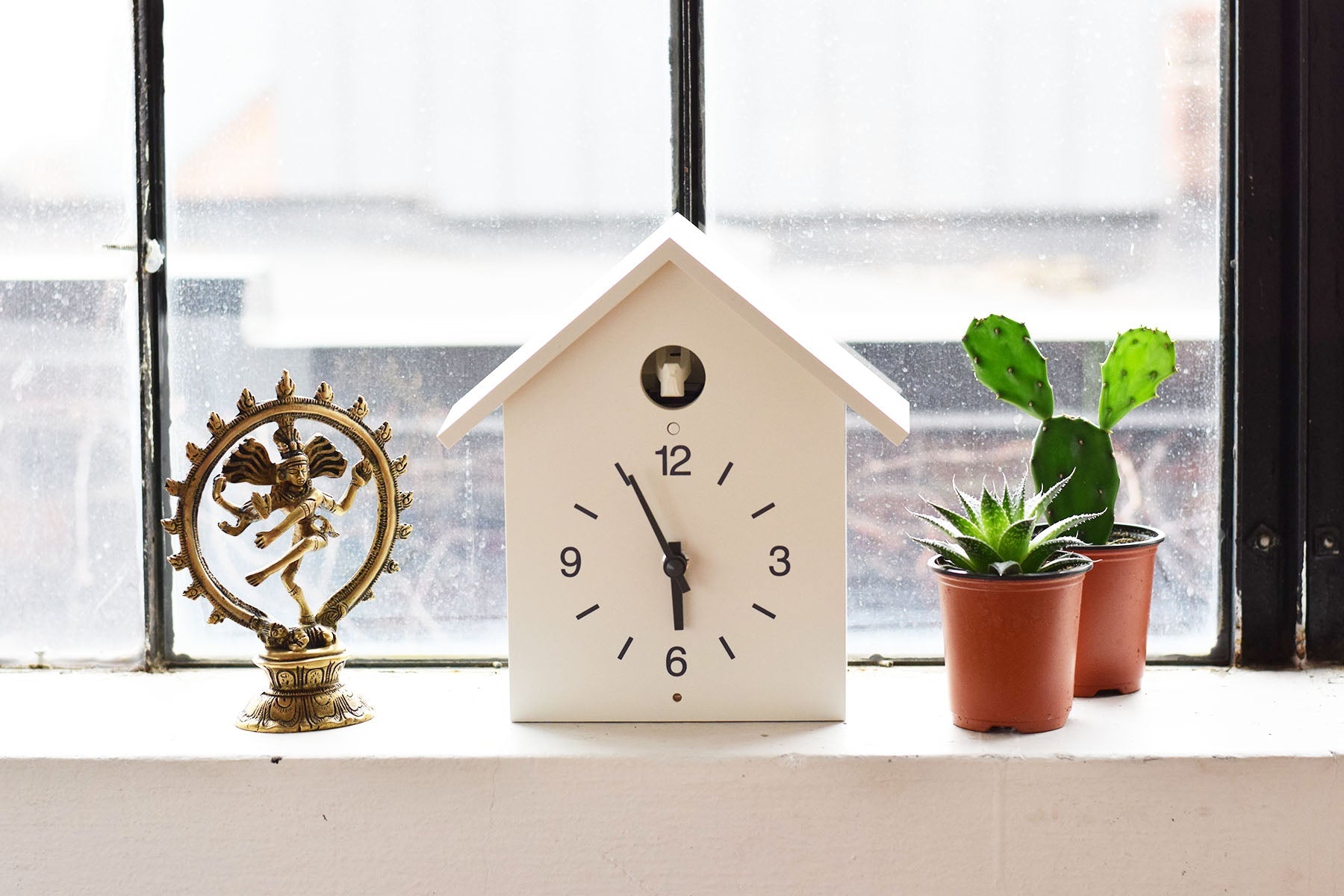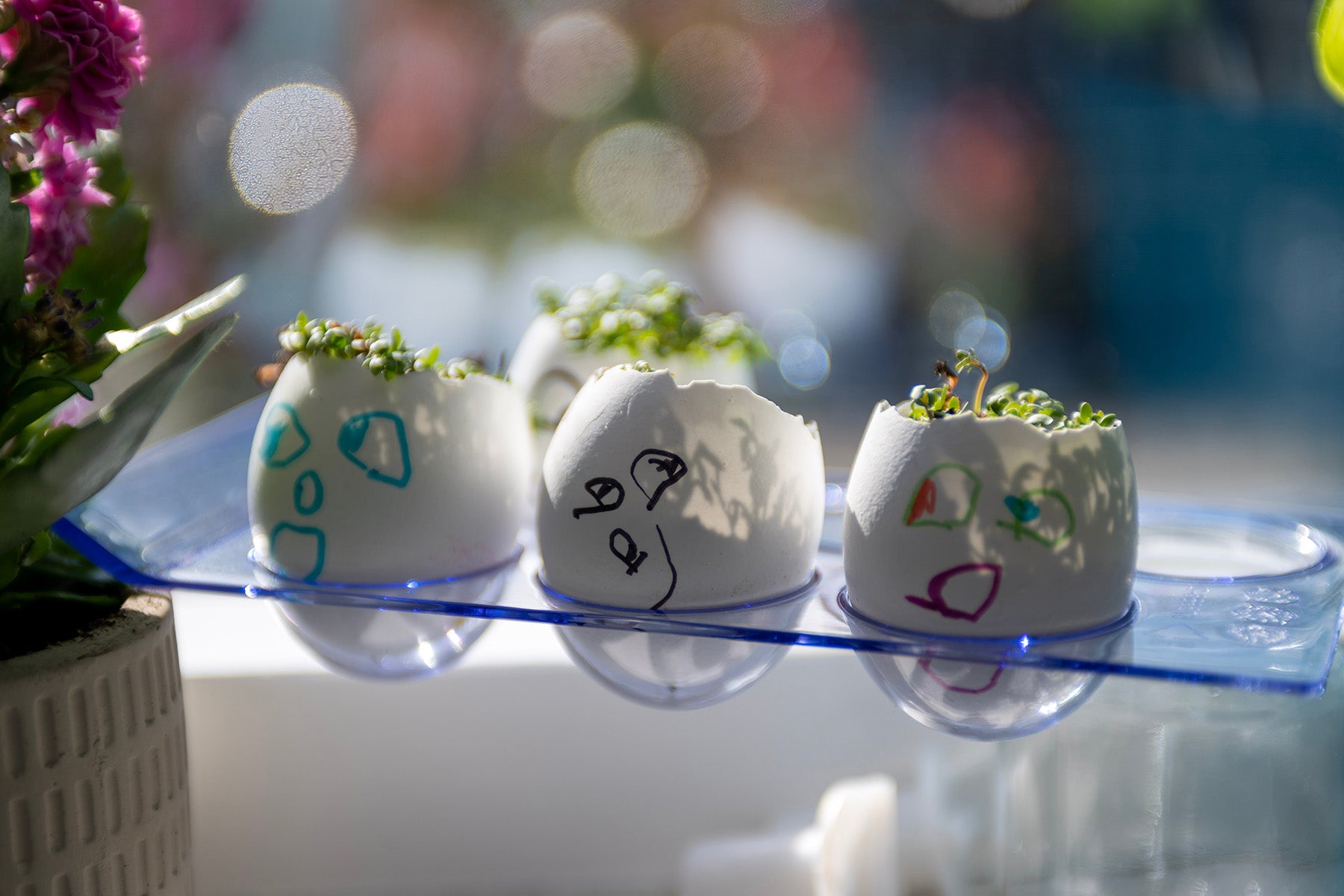
Pro Tips: Growing Plants in Small Spaces
So, you've run out of space for your plants... Now what?
Including plants in the environment that we spend the majority of our time in can have so many benefits, such as calming qualities, boosting the quality of air indoors, providing you with beautiful foliage to enjoy as you live your life, as well as so many more positives. This may not be a scientific fact, but add some greenery to your home and just wait to see how the atmosphere changes (we'll wait for you to get back to us on that). That being said, big, beautiful plants aren't always feasible, especially for city or apartment dwellers where extra space is a luxury. What if you don't have a lot of space to begin with, or you've run out of all free surfaces available?

In our opinion, there's no such thing as "too many plants," there is only such a thing as limited space, limited lighting, or a lack of inspiration. But, have no fear, we are here to help! We are here to provide some easy hacks to make more space for your plants, how to utilize your space properly, and other alternatives or supplements to have on hand if you lack the lighting that others have, especially if you live in a basement apartment or condo that only faces North. When it comes to lower light levels, your options for plants do diminish, but there are always other solutions that can be implemented to cheat the system. Let's get creative!
☀️
For more information on light levels in the home and how they affect our plants, please see our Indoor Lighting Guide.
Here are our top tips for when you have officially run out of space, as well as how to use the space that you do have effectively:
1. Go Vertical
This may sound obvious to some, but going vertical with your plants is the greatest way to maximize a small amount of space! All you need to be worrying about is having space to walk, you don't need to worry about needing the rest of the empty volume in a room (as long as you aren't too tall where you will bump your head on a bunch of hanging plants...). Going vertical can look like the following:
Vertical shelving (on walls):
There are so many options when it comes to shelving, but the main choices would be mounting shelves right underneath a window (in line with the windowsill), shelving on walls that receive light from nearby windows, or suction cup shelving that can be stuck to the windowpane directly. Picture ledges are quite popular in rooms with floor-to-ceiling windows as well since the small groove down the length of the base to keep plants - or pictures - from falling off is ideal for a display of trailing plants.
🪟
On another note, windowsills are extremely underrated as prime locations. If there is any sort of ledge on your windows wide enough to hold a potted plant, use all of that space because they receive the beautiful light that most plants love and need!
Vertical shelving (on the floor):
Bookshelves (especially backless ones), room dividers, ladders, stairs, bar carts, and any other furniture that can be used innovatively are possibilities as well. As long as the location is receiving appropriate lighting for a specific plant, why not use the furnishing in our homes in a way that it wasn't necessarily meant to be used?
Making use of any vertical space can be so effective because it allows you to stagger your plants by height, while also using space that wasn't available before. If you aren't the type of person to keep decor and art around your home, why not keep plants in those locations instead - you can even install grow lights for plants that are kept far away from any windows. There will always be someplace for a tall plant, a short plant, a trailing plant, or a climbing plant, just try to be a little creative when arranging the furniture (or shelving) that you already have in your possession!
Plant-Display Tip: Second-hand stores are great places to shop for such furniture pieces as we mentioned above, just think about how it would display your plants and the available space you have in your home.
2. Hanging Plants
Installing hooks, or using under-utilized hooks, is a great way to get plants off of surfaces and in front of windows. They are especially great for plants that trail naturally, which will create a tropical atmosphere in any room as they grow. Hanging your plants will also allow you to use the window real estate more effectively since we all know plants need that beautiful light to grow and curtain rods definitely weren't only made for curtains! Tension rods, curtain rods, coat hooks, towel hooks, and repurposed movable clothing racks are perfect options to consider when hanging your plants. You can even install tiered hooks in the ceiling in front of windows - but be careful if you are renting your space as modifications may not be allowed, it is always best to check with your landlord first.
🏋️♀️
Keep note of how much weight you are wanting to hang as certain hangers will only be able to handle a certain amount of weight. For example, for tension rods, there are large, sturdy bars for when you want to hang heavier plants (or a lot of plants) and smaller, thinner rods for when you have fewer or lighter plants to hang.
Hanging plants on the wall in hanging planters is another great alternative, especially since there are so many stunning planter designs nowadays, they truly feel as though you are hanging art on your walls. Macrame wall hangings and plant hangers have also been popping up everywhere, creating a cozy display on an otherwise empty wall. Add a plant to it and, just like that, you have a piece of living art!
3. Stay Small
If you truly have such limited space, you should probably consider staying within the range of 2.5" - 4" pots of plants. The great thing about this is that these pots can probably sit on the few windowsills that you have available in your home very easily. Some space-saving options would be Succulents (the majority of succulents are on the smaller side), Air Plants (these are ideal since they don't need soil to survive and can be placed anywhere, as long as they are receiving medium to bright light), certain Hoyas, and so many more.
🚿
Plenty of bathrooms have at least one window in them and would be an excellent place to keep a plant, whether on the windowsill or hanging, due to the higher humidity levels in those rooms as compared to others.
4. Proper Plant Selection
On a similar note, it is key to be very selective when choosing plants if you have limited windows and natural light. Choose varying plants that can handle lower light, medium-light, and bright light, which are the ones that will need to be right in the window, or as close as possible. The great news is that there are plants for most spaces, you'll simply need to care for them accordingly, but we cover everything about plant care through our individual product pages, in our Plant Care Library, and in our Plant Care Tips.
Our lighting guide that was linked above is a great resource to have on hand in this case, but here are some recommendations for each light level classification:
Low Light:
Snake Plants, ZZ Plants, Cast Iron Plant, Spider Plants (these are also a great option for lower light, hanging plants), Pothos, trailing Philodendrons, Pothos, and Peace Lilies. View all.
🚨
Plants placed in lower light will not need to be watered as often as those placed in brighter light, which they can also handle, but these specific plants are much better suited for lower light. Please remember that plants will grow based on how much light they are receiving, meaning they may not stay as full and lush as they were in the greenhouses they were originally raised in.
Medium Light:
Chinese Evergreens, Dieffenbachia, climbing Philodendrons, Hoyas, Begonias, Silver Satin Pothos, Air Plants, Haworthia, Pilea, Jade Plants, Peace Lilies, Peperomia, and Rubber Plants. View all.
Bright Light:
Cacti, Haworthia, Aloe, Echeveria, most other Succulents, Jade Plants, Lithops, Baby Toes, String of Pearls, Oxalis, Polka Dot Plants, Lemon Trees, Rubber Plants, and most variegated plants. View all.
☀️
For bright light locations, there will be direct light and there will be indirect light, where one receives direct sunlight and the other has a large view of the sky with minimal direct sun. It is important to only keep plants that can handle long periods of direct sunlight in the locations that receive it.
5. Grow Lights
An easy fix to many small-space issues would be to invest in grow lights. They come in varying forms, whether that is strip lighting, classic bulb shapes, longer bulbs, and more, so they can provide a solution in multiple ways. If you have shelves that don't receive much natural light, you could consider installing strip lighting on the bottom of the shelf above, therefore opening up some space for plants. Or, if you get the classic bulb shape, you could screw them into standing floor lamps and shine them over a larger plant that cannot be placed near a window. Now, they don't solve the problem completely, but they can certainly make up for the lack of natural light if you are struggling!
6. Propagation
As a final solution, if you simply don't have the space for many plants, let alone larger plants, try propagation! Ask your friends and families for cuttings of their plants that you can grow in glass jars along your windowsill, allowing you to enjoy some beautiful foliage without utilizing space you don't have. It may not have the exact same effect as having plants dispersed throughout your house, but it will allow you to enjoy some semblance of greenery in your life.
@jomostudio How to propagate almost any plant in water 🚰. ##houseplants ##cebublue ##propagation ##houseplantsoftiktok ##plantparent
♬ Peace - Official Sound Studio
As you can see, there are always solutions on hand for spaces that seem too small for plants! If you truly want plants in your life, there is definitely one method you could follow to make it work for you, just tailor it to your space and needs. Plants are so enjoyable to have in our surroundings, their presence is truly calming while also creating that luxurious, vacation vibe, who wouldn't want that? Check out the plants we have in stock, seeing what would be suitable for your space, and reach out to our support staff if you have any further questions about adapting plants to your space! We are always happy to help out.






